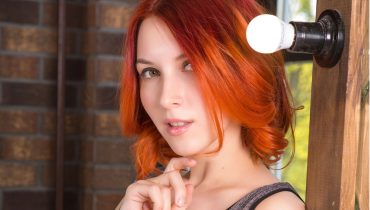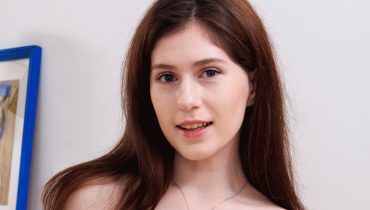When Clara Evans hit burnout at age 34, she didn’t recognize the warning signs at first. She thought she was simply “a little exhausted,” the way most working women describe themselves when they’re juggling impossible schedules.
As a marketing strategist in Austin, Texas, Clara lived in a cycle many American professionals know all too well: long days, stressful deadlines, late-night laptop sessions, weekend catch-up work, and a steady stream of caffeine to stay functional. But what she didn’t know was that her body had been silently shutting down.
“I thought burnout meant crying at work or collapsing,” she says. “But for me, it was losing the ability to sleep. That was the first thing that broke.”
Her insomnia didn’t arrive as a dramatic crash. Instead, it crept into her life like a slow fog—first through restless tossing at night, then through waking up at 3 or 4 a.m. unable to go back to sleep, then through full weeks where she slept only two or three hours a night. “I remember sitting at my kitchen table one morning, staring at my coffee, thinking—am I losing my mind?” Clara recalls. “My brain wasn’t working. I couldn’t regulate my emotions. I was jumping between panic and numbness. But everyone just told me to push through it.”
Eventually, Clara realized she didn’t just need rest. She needed recovery. And sleep recovery after burnout required a very different approach than simply “going to bed earlier.” What followed was the most difficult—and transformative—year of her life.
The Breakdown Before the Breakthrough
Sleep specialists often say that burnout is not a psychological state but a physiological one—a deep exhaustion of the nervous system that disrupts hormonal balance, immune response, and circadian rhythm. But Clara didn’t know that then. She thought she was failing. “I kept telling myself, other people handle stress better than you,” she says. “But my doctor later explained my body wasn’t weak—it was overwhelmed.”
The first major sign something was wrong came during a presentation. “I stood in front of twenty people and forgot everything. My mind went blank—completely blank. I had notes, slides, everything. But I couldn’t process language. That terrified me.”
The next day, her manager pulled her aside gently. “He said he’d noticed I looked run-down and suggested I take a weekend off,” Clara says. “A weekend? I needed a year.”
Soon after, she received the diagnosis: severe burnout with neurological symptoms, stress-induced insomnia, and adrenal dysregulation—conditions more and more women are experiencing in high-pressure industries. According to the CDC, chronic sleep loss affects nearly 70 million adults in the U.S., and women report higher rates of exhaustion-related insomnia than men.
Clara’s therapist put it even more plainly: “Your nervous system has been in emergency mode for so long that it doesn’t know how to shut down. Sleep is the first thing burnout breaks.”
And with that understanding, Clara began her journey into sleep recovery—not as a luxury, but as a medical necessity.
Understanding the Physiology of Burnout
Before Clara could heal, she had to understand what burnout really does to the body. Through sessions with her therapist, readings from the Sleep Foundation, and consultations with wellness coaches, she learned that burnout disrupts multiple systems at once:
1. The circadian rhythm breaks down.
Burnout often pushes the circadian rhythm out of alignment, confusing the body about when to release melatonin (the sleep hormone) and cortisol (the stress hormone). “My cortisol was spiking at night instead of the morning,” Clara says. “So I felt wired when I should have been tired.”
2. The nervous system enters chronic fight-or-flight mode.
When the body is stuck in sympathetic activation—the stress response—it cannot shift into parasympathetic mode, which is required for deep sleep. “I didn’t have an anxiety disorder,” Clara explains. “My physiology was simply stuck on high alert.”
3. The brain becomes inflamed.
Research from Harvard Health shows chronic stress increases inflammatory markers, impairing cognitive function and making both insomnia and fatigue worse. “No wonder I couldn’t think,” Clara says. “My brain was overheated.”
4. Hormones fall out of balance.
Burnout reduces progesterone, increases cortisol, and disrupts estrogen cycles—all of which impact sleep. “I didn’t even know hormones influenced sleep,” Clara says. “No one had ever taught me that.”
5. Emotional processing shuts down.
Sleep is where the brain reorganizes memories and emotions. Without it, emotional stability collapses. “I cried over small things and felt numb over big things,” Clara says. “It was like my emotional wiring was faulty.”
Understanding the biology gave Clara something she hadn’t felt in months: hope. “If burnout is physiological,” she realized, “then sleep recovery is possible. I just need the right routine.”
The First Phase: Stabilizing the Nervous System
Clara’s sleep recovery began with a counterintuitive instruction from her therapist: “Stop trying to sleep.”
Her therapist explained that forcing sleep triggers more anxiety, creating a feedback loop where fear of insomnia becomes the cause of insomnia. Instead, Clara was told to stabilize her nervous system first—not chase sleep.
Breathing Exercises That Rewired Her Nights
One of the most powerful tools she learned was the physiological sigh, validated by Stanford neuroscientist Andrew Huberman. “It’s two quick inhales through the nose and a slow, long exhale,” Clara explains. “It sounds simple, but it calms your entire system in under a minute.”
She practiced:
-
- physiological sighs before bed,
-
- box breathing during stressful moments,
-
- 4-7-8 breathing when she couldn’t fall asleep.
“At first it felt silly,” she says. “Then it became the only thing that could unfreeze my nervous system at night.”
Lowering Cortisol in the Evening
Clara also adopted gentle habits that reduced her nighttime cortisol:
-
- warm showers to trigger parasympathetic activity,
-
- dim lighting after 8 p.m.,
-
- turning off all screens an hour before bed,
-
- drinking herbal tea blends with chamomile, lavender, or lemon balm.
“It’s amazing how much light—not stress—is responsible for insomnia,” she says. “I used to scroll TikTok in bed. That alone kept my nervous system on high alert.”
The Second Phase: Repairing Her Circadian Rhythm
Once Clara’s nervous system stabilized, her sleep doctor shifted focus to repairing her circadian rhythm. “Burnout destroys circadian consistency,” Clara says. “My doctor taught me that getting back on track wasn’t about sleeping more—it was about timing.”
Morning Sunlight: The Reset Button
The first rule: sunlight within 30 minutes of waking.
“That one change made a huge difference,” she says. By standing outside for 10 minutes every morning, her brain received a clear signal: “This is daytime.” As recommended by the Sleep Foundation, morning light helps regulate melatonin release at night, aiding sleep onset.
A Fixed Bedtime—Even If She Couldn’t Sleep
Going to bed at the same time every night—even if she didn’t feel sleepy—trained her body to anticipate rest. “My therapist warned me that forcing sleep wouldn’t work,” she says. “But creating predictability would.”
For weeks, Clara lay awake some nights but didn’t panic. “I trusted the process. And slowly, it worked.”
The 10-3-2-1-0 Rule
Clara used a popular circadian hack called the 10-3-2-1-0 rule:
-
- No caffeine 10 hours before bed
-
- No heavy meals 3 hours before bed
-
- No work 2 hours before bed
-
- No screens 1 hour before bed
-
- 0 “snooze” button in the morning
“That last one is brutal,” she admits. “But hitting snooze destroys your sleep inertia and confuses your brain about when waking actually starts.”
The Third Phase: Building a Night Routine That Healed Her
The biggest transformation came from Clara’s nightly wind-down ritual. It wasn’t elaborate—just consistent. And consistency, not complexity, is what heals burnout.
Her routine looked like this:
-
- turn off work notifications at 8 p.m.,
-
- drink herbal tea at 8:15,
-
- stretch gently for 10 minutes,
-
- review her planner for tomorrow so her brain could shut off,
-
- read fiction—not self-help—before bed,
- practice deep breathing once she lay down.
“Reading fiction saved me,” Clara says. “It got me out of my own head and into a world where the stakes were imaginary.”
Creating a Sleep Sanctuary
Clara redesigned her bedroom based on recommendations from the Mayo Clinic. She:
- set the temperature to 65°F,
- added blackout curtains,
- purchased a white noise machine,
- (most importantly) removed her phone from the room.
“My bedroom used to be full of work—laptops, notes, notifications,” she says. “It was no wonder my brain didn’t associate it with rest.”
The Emotional Journey of Sleep Recovery
Burnout recovery wasn’t just physical for Clara—it was emotional. “Once I finally slept, I cried. A lot,” she says. “My therapist explained that sleep is where emotional processing happens. When we’re sleep-deprived, we lose the ability to regulate feelings.”
As her sleep improved, Clara noticed profound changes:
- Her mood stabilized. She wasn’t irritable or unpredictable.
- Her memory returned. “It felt like my brain woke up from a coma,” she says.
- Her stress tolerance improved. Small setbacks didn’t overwhelm her.
- She felt joy again. “Not excitement—joy. The quiet, peaceful kind.”
Her relationships also healed. “I didn’t realize how burned out I had been until I started laughing again. My husband said he felt like he got his wife back.”
What Clara Tells Other Women Now
Clara now shares her experience with women in local community groups and online forums. Her main message is simple:
Sleep recovery after burnout is possible.
But it requires surrender, not force.
Her top pieces of advice:
- Stop glorifying exhaustion. Women are conditioned to keep going until they break. “Don’t wait for your breakdown,” she warns.
- Rest before your body demands it. “Recovery is easier when you’re tired—not when you’re destroyed.”
- Sleep is not a reward. “It’s the foundation of every other success—health, career, relationships, mental clarity.”
- Your exhaustion is not a moral failure. “It’s your biology asking for safety.”
- Small habits heal you faster than dramatic overhauls. “Pick one change. Then another. Build your routine like a staircase.”
Clara’s Closing Words
Looking back on her journey, Clara is grateful for the collapse that once terrified her. “Burnout broke me open,” she says. “But it forced me to rebuild a life where rest, not overwork, is the center.” She now sees sleep not as the end of the day, but as the beginning of everything else. “Sleep is where healing happens. It’s where your brain resets, your emotions settle, your body restores. When you recover your sleep, you recover yourself.”
Her last message is the one she wishes someone had told her years before: “You can always rebuild your life. But you must start with rest.”




























































